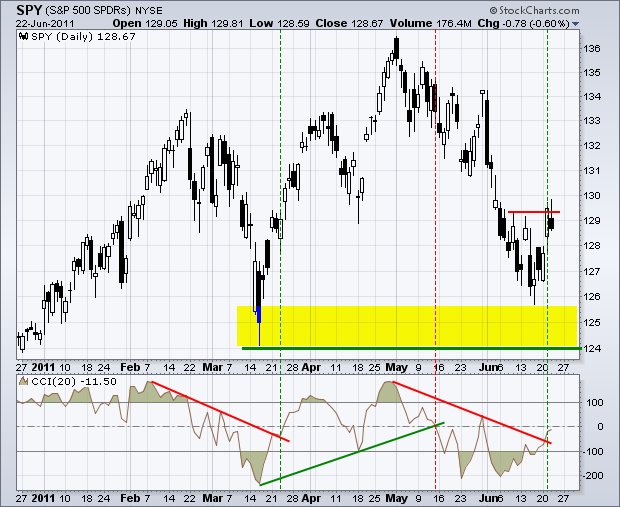Stocks extended their gains early Wednesday, but selling pressure hit the market in the afternoon and the major index ETFs closed weak. Some backing and filling can be expected after a sharp surge, such as that seen on Tuesday. At this point, it is important that the first support zones hold. Tuesday's gaps and breakout points turn into support zones. A move below these support zones would be negative and suggest that this breakout has failed. Such a failure could see a test of the March low for SPY. Despite a big move on Tuesday, QQQ is the only one of the big three that did not break the June 14th high. IWM met resistance from the prior support zone, which coincides with the neckline of a Head-and-Shoulders pattern that formed in April-May. Note: If there are any subcribers with the CMT designation who are willing to sponsor a future CMT, please email mail me at arthurh(at)stockcharts.com or submit a comment.

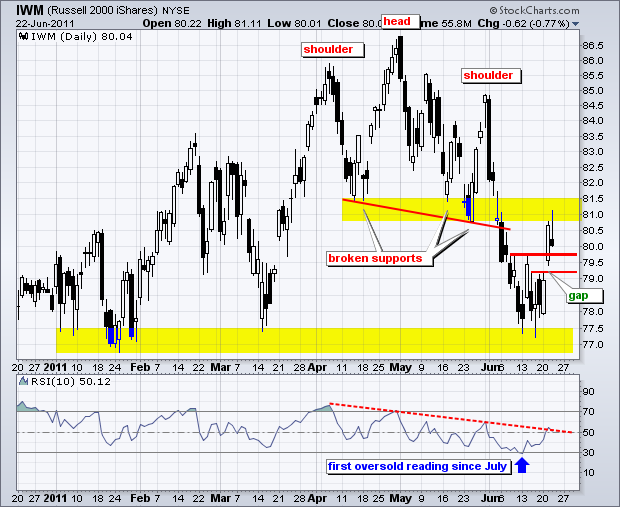
The 60-minute charts offer more details on the support zones. SPY broke out at 128 with a gap and has a small low around 127.4 to mark the bottom of the support zone. The QQQ support zone extends from 54 to 54.50. IWM, which had the strongest breakout, has a support zone in the 78.5-79.5 area.
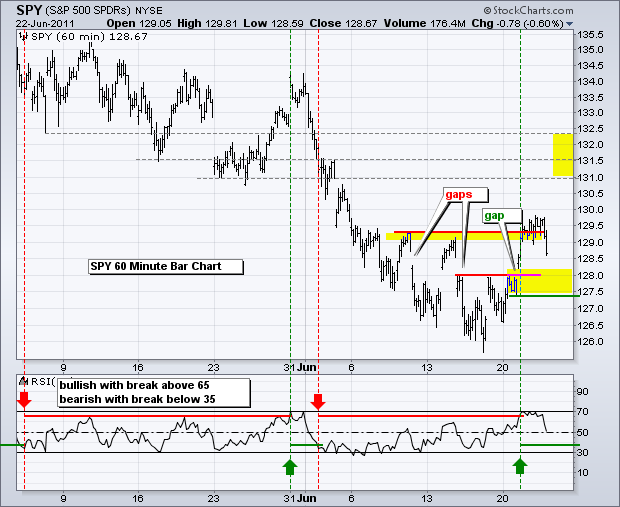
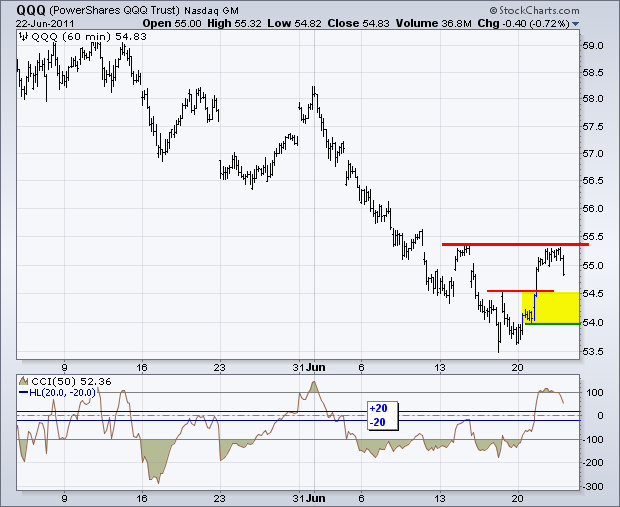
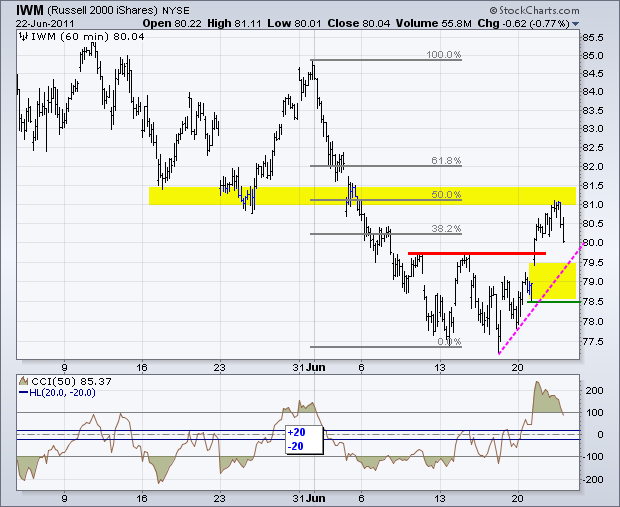
Key Economic Reports:
Jun 23 08:30 Jobless Claims
Jun 23 10:00 New Home Sales
Jun 24 08:30 GDP
Jun 24 08:30 Durable Orders
Chart of Interest: Tuesday and Thursday in separate post.
This commentary and charts-of-interest are designed to stimulate thinking. This analysis is not a recommendation to buy, sell, hold or sell short any security (stock ETF or otherwise). We all need to think for ourselves when it comes to trading our own accounts. First, it is the only way to really learn. Second, we are the only ones responsible for our decisions. Think of these charts as food for further analysis. Before making a trade, it is important to have a plan. Plan the trade and trade the plan. Among other things, this includes setting a trigger level, a target area and a stop-loss level. It is also important to plan for three possible price movements: advance, decline or sideways. Have a plan for all three scenarios BEFORE making the trade. Consider possible holding times. And finally, look at overall market conditions and sector/industry performance.

